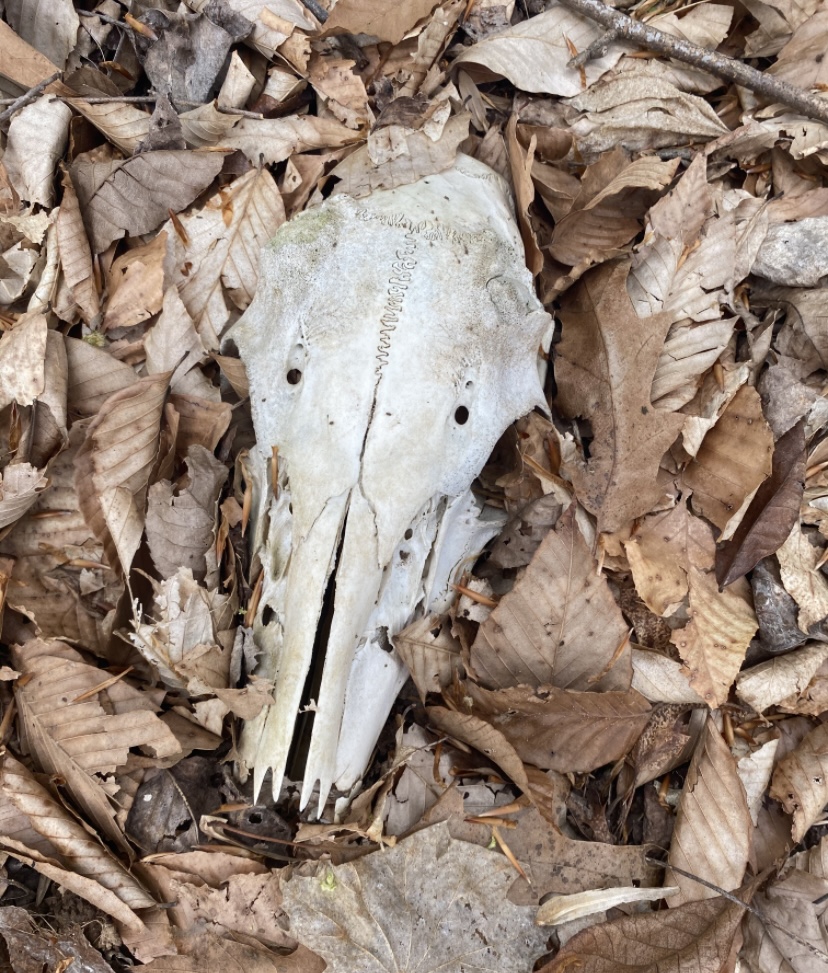
One of our favorite activities any time of year, but especially Fall, is turning over logs to look for decomposers. Decomposers are an organism, especially a soil bacterium, fungus, or invertebrate, that decomposes (breaks down) organic material. They play a critical role in the flow of energy through an ecosystem. They break apart dead organisms into simpler inorganic materials, making nutrients available to primary producers (like plants!.) Maybe that doesn’t sound exciting, but decomposers are an incredibly important part of life– without them, dead leaves, dead insects, and animals would just pile up everywhere. Imagine what the world would look like! You can do this in your backyard or on a hike in the woods, once you start looking decomposers are everywhere and it’s fun to see what different types you can find and identify with a field guide or in your nature journal. In my experience nearly all children love flipping over logs to look for critter!
While the terms decomposer and detritivore are often interchangeably used (including by me..), the difference is that detritivores ingest and digest dead matter internally, while decomposers directly absorb nutrients through external chemical and biological processes. So that makes fungi important decomposers They get all their nutrients from dead materials that they break down with special enzymes. Many insects are decomposers- beetles, earthworms, pill bugs millipedes etc. Bacteria are also decomposers, but we can’t observe them under a rotting log the same way. Rotting logs look lifeless, but they are an important home for all sorts of life. As the wood decays, the nutrients in the log are broken down and recycled. Insects, mosses, lichens and ferns make use of those nutrients to grow. Plants and fungi break apart the wood, and moss keeps the log moist, which makes it a suitable habitat for other plants and animals to live.
Samhain and Halloween are holidays that honor death and the end of the growing season. Plants are dying, some animals are dying others are leaving and the wetaher is becoming cold and dark. I had trouble connecting to this as a child, it felt scary. (Honestly it wasn’t much better as an adult.) But decomposers remind us that it’s all part of the cycle. The nutrients that the decomposers produce fuel next year’s growth. It’s not an end, but a beginning. I love this way of looking at this season, sure bugs are creepy crawly and fit the aesthetic of the holiday, but they are also doing an important job for all of us and bringing the next season of growth.
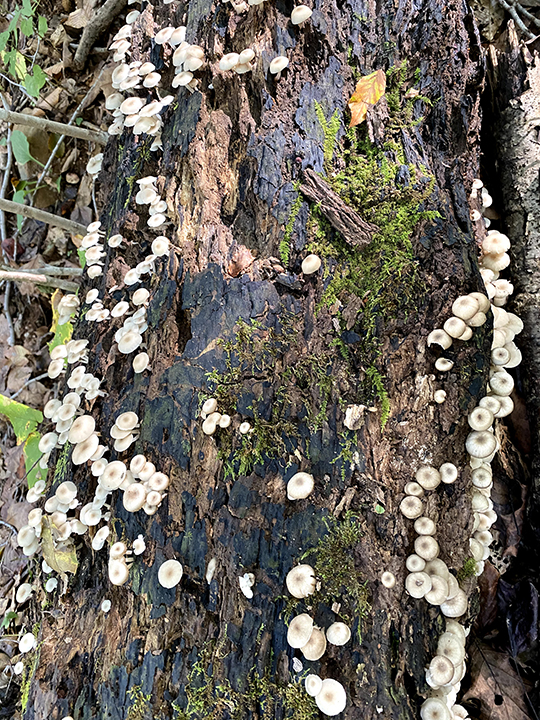
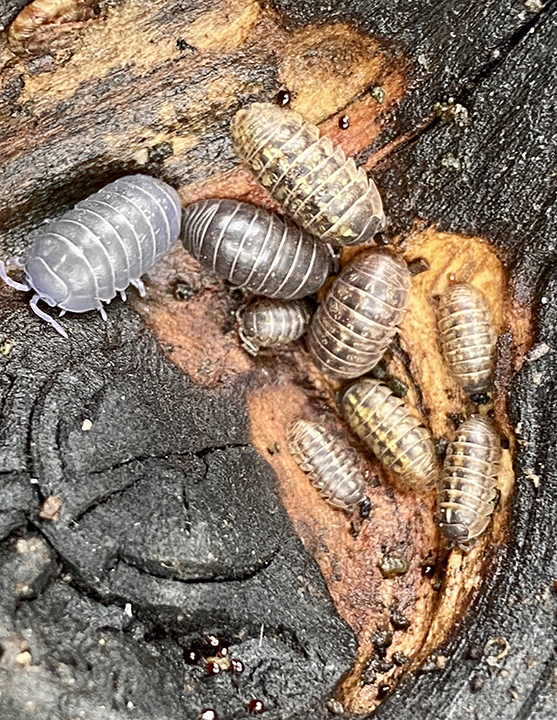
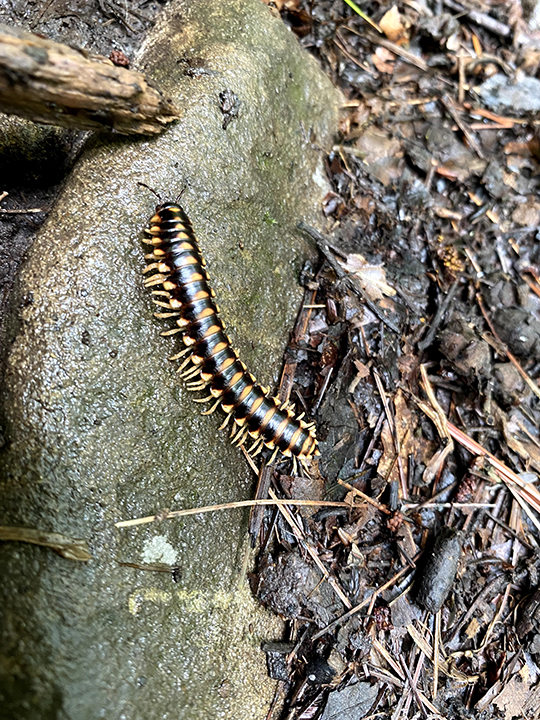
To look for decomposers on your hike:
Find a nice log on the ground. First observe the surface, is there fungi, moss or lichen on your fallen log? What about other plants (seeds that land on soft wood sometimes sprout and grow directly out of the wood).
If it’s small enough, carefully roll a log over to reveal the underside. look for earth worms or other insects skittering around where the log was.
Observe if any pieces of the log look like soil. These are areas where decomposers like worms, insects, and fungi have already helped break down the log into smaller pieces
Look for evidence of animal activity, such as piles of sawdust, holes, tracks, webs, patterns in the wood under the bark. Beetles often make beautiful “drawings” as they munch through the wood. Bark beetles eat away at the living layer (cambium) of the tree just under the surface of the bark and can contribute to the death of a tree.
Termites, ants, wood roaches are scavengers who will eat away at and break down the log itself.
Look for spiders, millipedes and beetles who are feeding on the scavengers who are feeding on the rotting logs.
Keep an eye out for birds and other animals who are looking to feed on both the scavengers and predators!
If you come across any skulls or bones on your hike you can talk about how their nutrients have returned to the earth with the help of decomposers.
Last, always make sure you roll the log back into place the way you found it, it’s someone’s home!
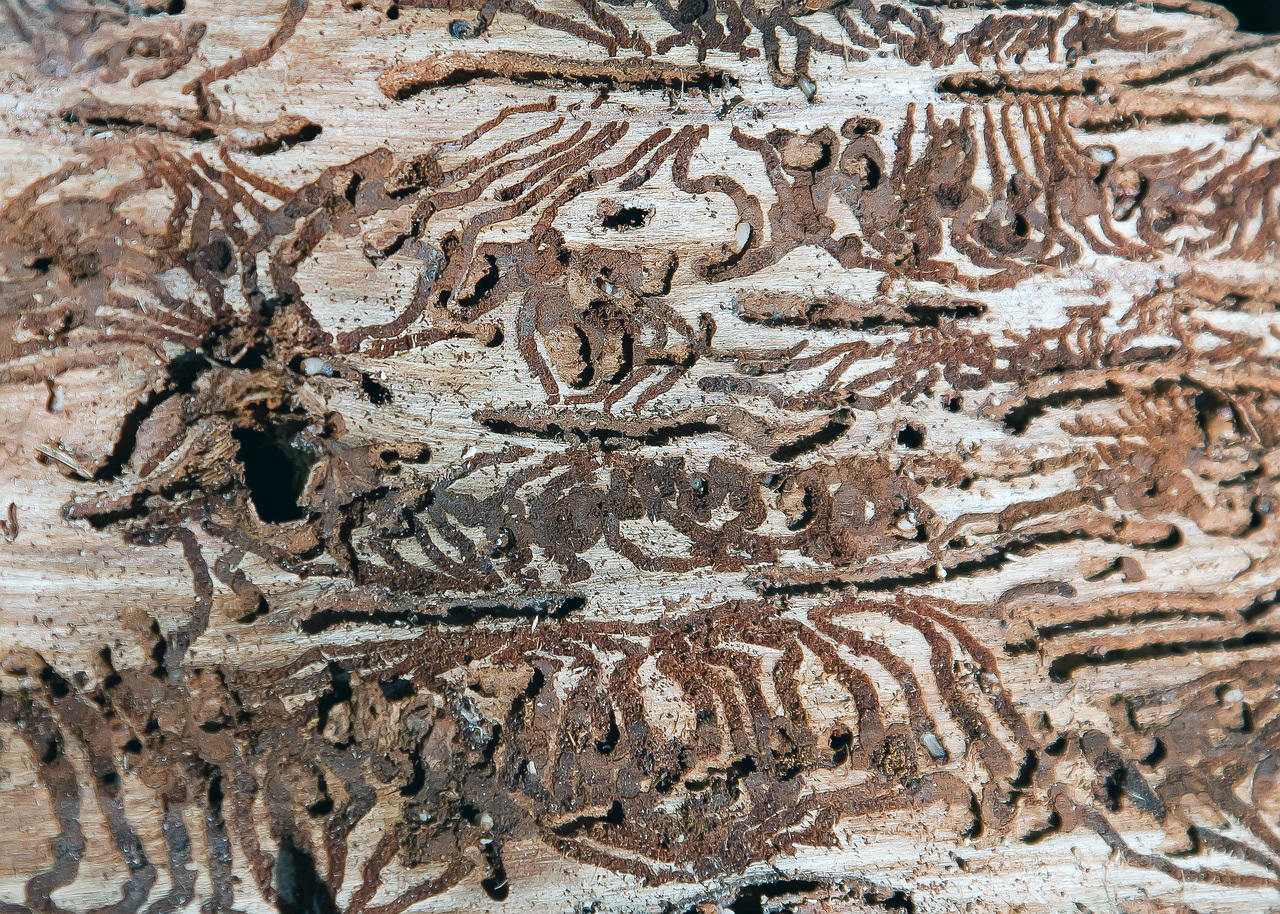

[…] Decomposer Hike […]